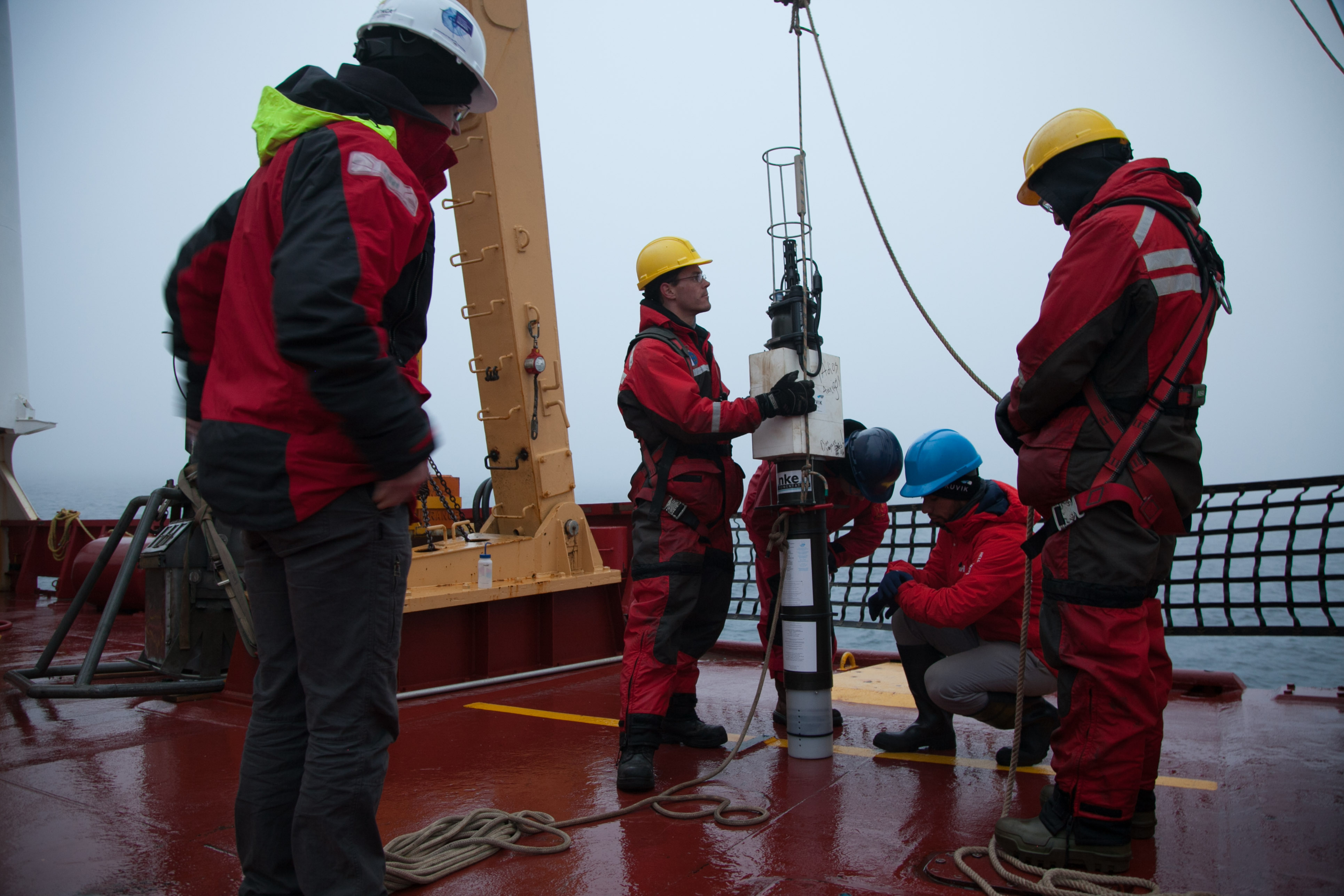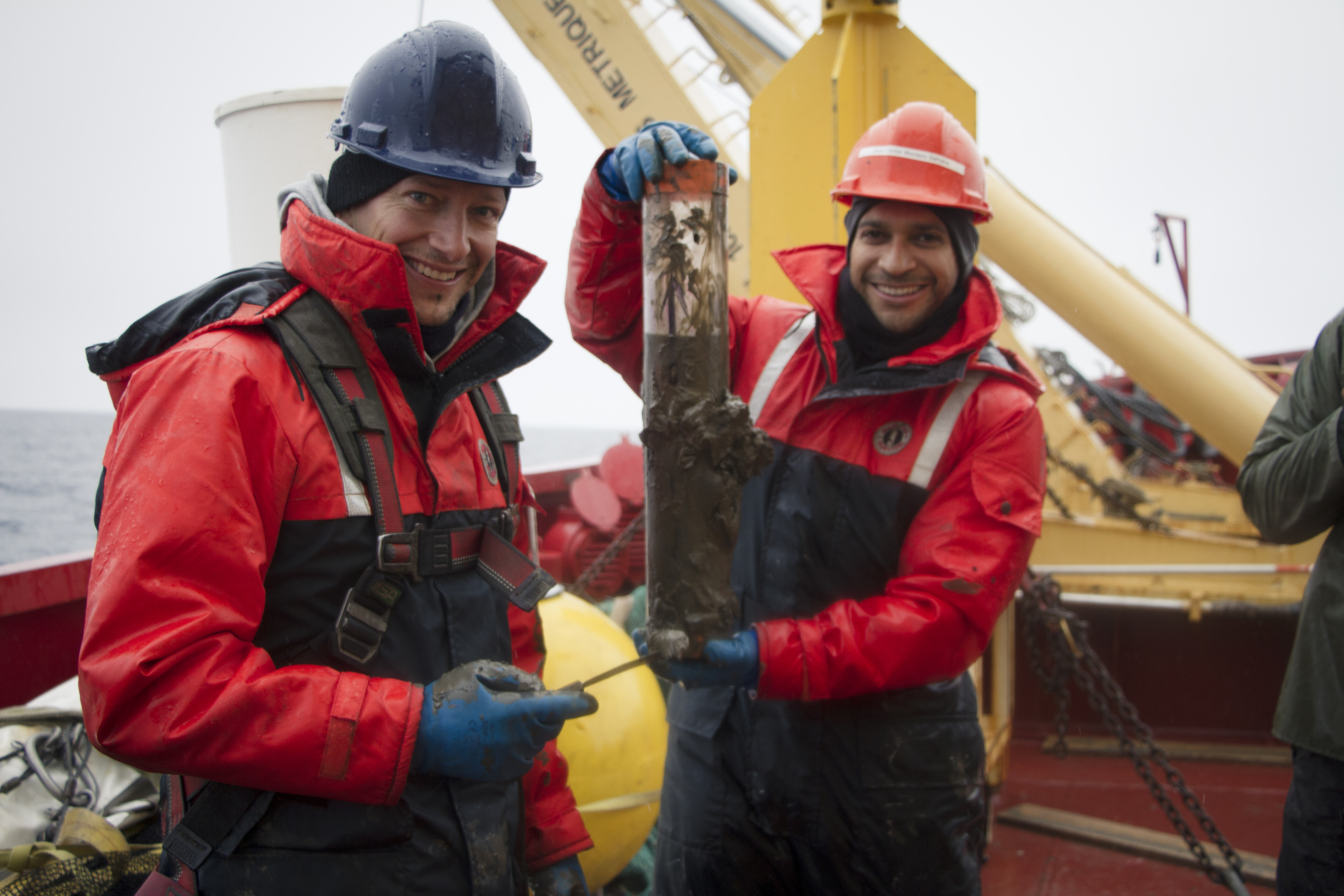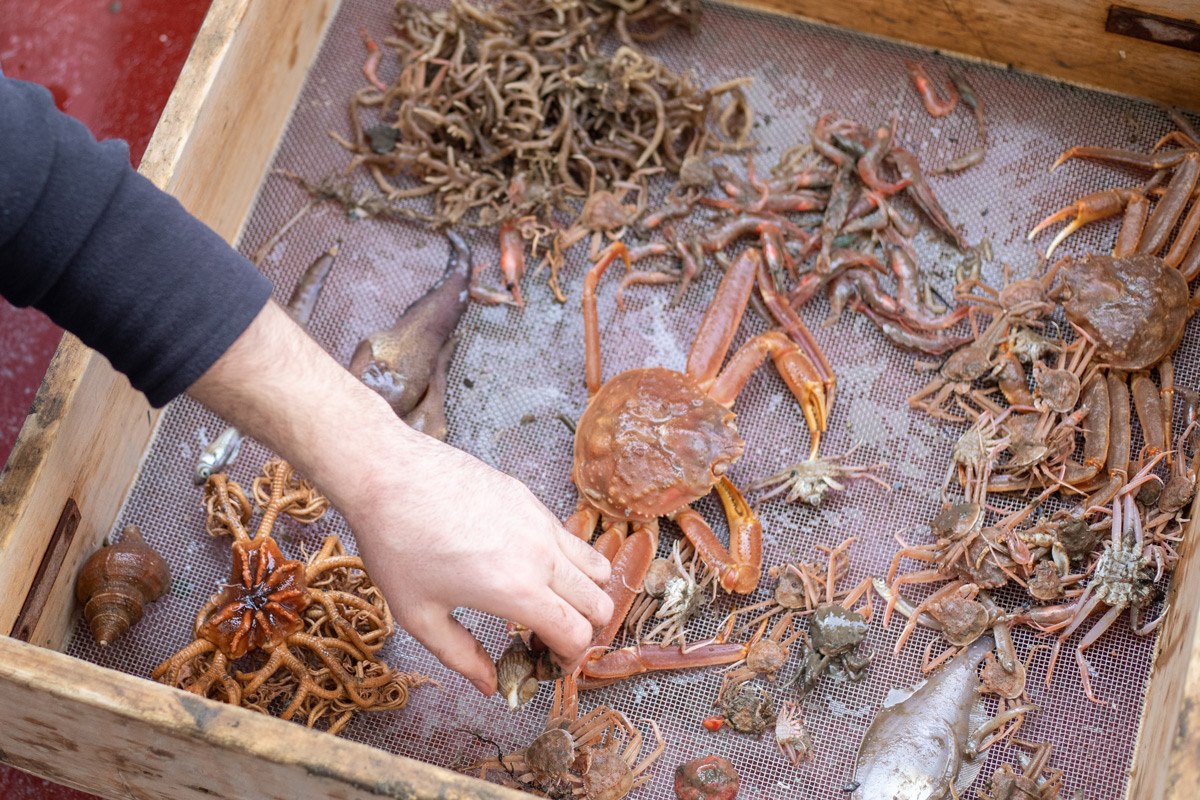SINCE APRIL 1st, 2025 — In the interests of improved follow-up and efficiency, please send your IT support requests to aide@qo.ulaval.ca.
The oceans dominate and define our planet but remain largely unexplored. Our understanding of the fundamental processes that govern them remains very fragmented. Yet this understanding is a necessary step toward implementing informed protective, regulatory or adaptive measures and achieving sustainable use of the marine environment. The research performed under Axis 1 becomes even more relevant, effective and impactful when the observational technologies that support it are developed, when knowledge of the processes that govern the circulation of water and ice increases, and when the activity of marine organisms and the flows of matter and energy are better measured, understood and modelled. To this end, Québec-Ocean is working on four themes that support one or more themes of Axis 1.

While a large portion of ocean research needs to be conducted from ships or from the coast, this approach does not fully address the time and space scales that must be considered to respond to major environmental issues and keep pace with climate change. The design and deployment of new means of measurement, combined with innovative methods of massive data processing and modeling, is required to attain this goal. These means include remote sensing and various autonomous devices equipped with sensors that provide information on the physical, chemical and biological structure of the ocean. Coupled physical-biological numerical modeling can fill the gaps between point observations, assess the relative impact of different forcings on ecosystem functioning, and then develop plausible scenarios of the future state of the ocean in the face of anthropogenic perturbations.
In order to augment capacities for observation and ecological monitoring, the team is developing new algorithms to better exploit remote sensing data. It develops, tests or adapts new technologies (e.g. sensors, profiling buoys, gliders and autonomous underwater and airborne vehicles) and refines or develops modeling tools.
The motion of seawater can be induced, modified or constrained by a combination of factors, including tides, wind, Earth's rotation, ice, temperature and salinity differences, freshwater inputs, sediment load and vegetation. These factors make ocean circulation complex and highly variable, hence difficult to predict. This variability, which ranges from the millimetre scale that characterizes turbulence to the thousands of kilometers covered by the largest ocean currents and gyres, needs to be better quantified in order to better understand circulation, ice trajectories and the interactions between physical, chemical and biological processes. A good representation of these processes is necessary to assess nutrient fluxes and the transport and dispersion of anthropogenic pollutants, micro-plastics and natural toxins in the marine environment.
The team studies the fundamental mechanics of the ocean using measurements at sea, laboratory experiments, numerical modelling and new theories. It studies waves, eddies, fronts, sea ice, turbulence, internal waves and convection.

Certain chemical elements, such as nitrogen, are often limiting for primary production in the marine environment. Understanding the chemical and microbial processes that affect the cycling and availability of these elements in the ecosystem is essential to understanding their functioning and productivity. Moreover, the vertical and horizontal physical processes that govern the exchange and transformation of matter in the marine environment are still poorly understood and quantified. Along the coastline, point or diffuse inputs of freshwater and matter influence biological productivity and the accumulation and dynamics of sediments on the seafloor. The exchange of different inorganic or organic molecules between habitats that share species is crucial for their functioning and the establishment of marine protected areas. At the water-sediment junction, the deposition of organic debris feeds benthic communities. In return, geochemical processes in the superficial sediment influence the water column by releasing nutrients and gases (e.g. methane). At the air-sea interface, several phenomena, including the formation of microlayers and photochemical processes triggered by solar radiation, cause the ocean to reduce or increase the atmospheric load of greenhouse gases (e.g., CO2, CO and N2O).
The team is studying the details of macro-elemental (nitrogen, carbon) and micro-elemental (trace metals, e.g., iron and copper) fluxes in pelagic and benthic environments in relation to species richness and the functional composition of microbial communities (OMICS). It measures and models gas and matter fluxes in the shallow and deep ocean, sediment and coastline to better understand the functioning of the marine ecosystem, how it is affected by exchanges at its boundaries and in turn acts on the atmospheric load of greenhouse gases
.

In order to value marine ecosystems and effectively assess and reduce the impacts of human activity on them, it is important to better understand the behavior of different key species, how they use habitat and respond to environmental fluctuations and changes. It is also important to better understand the principles that govern the dispersal of organisms, the connectivity between populations, and how competition and predation processes structure biotic communities and biodiversity. While some species have a relatively fixed life history and behaviour that makes them particularly vulnerable to change, others, such as invasive species, have a great potential for acclimation that allows them to spread and alter communities. Some organisms can produce harmful toxins, while others synthesize substances of interest to industry and medicine.
From bacteria to marine mammals, the team studies and models the life cycles, physiology, feeding, reproductive success and survival of species, as well as the mechanisms that govern their interactions. Techniques employed include tagging, isotope tracing, visual census, acoustics and remote sensing, as well as mathematical and modeling approaches. Several tools are developed and used to measure ecosystem responses, including meta-analysis, landscape genetics, productivity, functional genomics and various measures of biodiversity. The results provide a better understanding of the principles of organization within marine ecosystems and provide factual bases to support the implementation of measures for the protection and conservation of species and habitats.
↼ Return to Axis 1